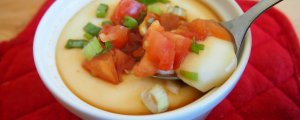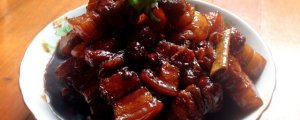
Fried rice noodles with Canadian Arctic shrimp
(155810 views)
Canadian Arctic shrimp is produced 400 meters deep in the Arctic waters of the northern hemisphere. It takes about 6 years to reach the commercial specifications. They are all wild Arctic shrimp. From fishing effluent to transportation to each importing country, it needs to be fished, cleaned, sorted, boiled, frozen and packaged, and finally transported to each importing country, so as to complete the shrimp raw journey from the deep sea to the dining table. Rice flour was originally the staple food in the south. With the migration of people's taste, rice flour was gradually accepted and loved by people in the north. When the fresh and sweet wild Arctic shrimp meet the smooth rice noodles, what kind of sparks will they collide with?
Cooking ingredients
Cooking Steps

Step1:Ingredients are as shown in the figure - Canadian Arctic shrimp is cooked and frozen. It's good to thaw naturally; onion and carrot shreds are for standby.

Step2:Put the rice flour in a bowl. Soak it in warm water; soak it in soft water, take it out and pull it into small pieces.

Step3:Knock 2 eggs into the bowl. Add a little salt and cooking wine and beat them up.

Step4:There is little oil in the pot. Heat it and pour in the egg liquid. Stir it with chopsticks. Stir well and then dish it out for use.

Step5:In another oil pan, heat up. Pour in onion and carrot. Stir fry and add rice flour. Continue to stir fry.

Step6:Stir fry with a little soy sauce. Stir in the egg and prawn. Stir well with five spices and chopped green onion.

Step7:Finished drawings.

Step8:Take a chopstick. Shrimp, rice noodles, eggs, bean sprouts. This dish is salty and fresh. The meat of Canadian Arctic shrimp is compact and chewy. The rice noodles are smooth and not sticky.
Cooking tips:Canadian wild Arctic shrimp is cooked and frozen. So when you stir fry the powder, you should pay attention to the cooking time and cooking time, so as to avoid the aging of shrimp meat and poor taste. There are skills in making delicious dishes.
 Chinese Food
Chinese Food












